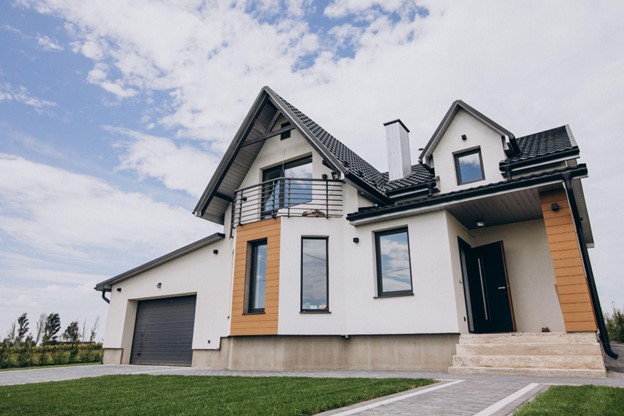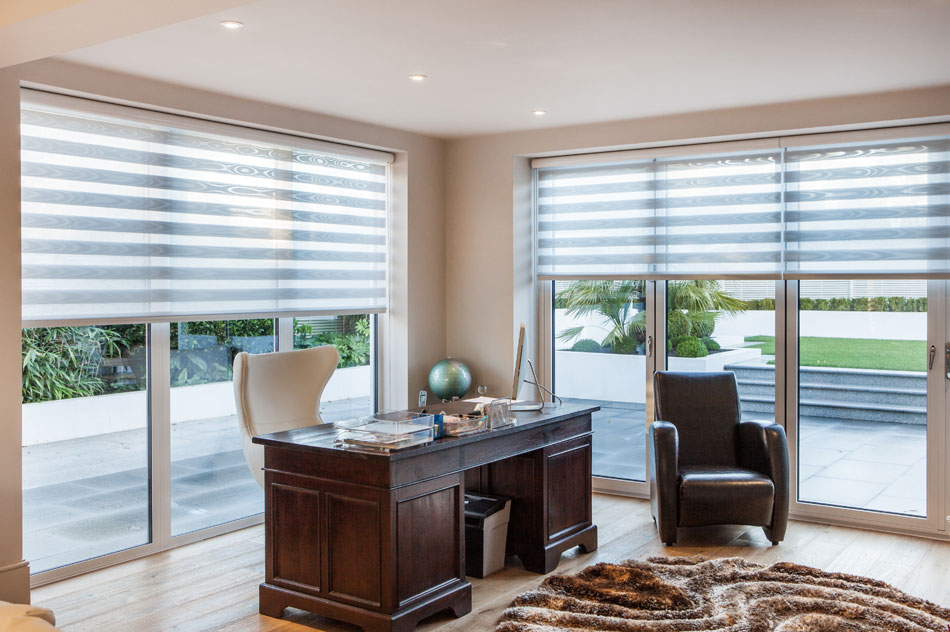As an expert in interior design, I am often asked about innovative flooring options that not only offer functionality but also add an aesthetic appeal to your living space. An exciting option that always comes to my mind is the tile and wood flooring combination. Let’s delve into the exciting world of “How to Combine Tile and Wood Flooring”. Keep reading!
Why Choose Tile and Wood Flooring Combination?
![How to Combine Tile and Wood Flooring? [Wording Ideas] 2024 2 Why Choose Tile and Wood Flooring Combination?](https://beyondherd.com/wp-content/uploads/2023/07/Why-Choose-Tile-and-Wood-Flooring-Combination.jpg)
Tile and hardwood flooring integration provides an enticing blend of natural elegance and practical durability. Both materials have their distinct advantages: wood offers a warm, inviting aesthetic and comfort underfoot, while tile provides unmatched durability and moisture resistance. Combining these two materials is an excellent way to harness these benefits while also creating a unique and visually stunning floor design.
Mixing Tile and Wood Flooring
Transitioning between different flooring materials might seem challenging at first glance, but with the right tile and wood floor transition techniques, you can achieve a smooth and cohesive look. A popular option is a ‘flush’ transition, where the two materials meet directly without any transitioning piece. You can also opt for ‘T-moldings,’ a type of threshold that bridges two different materials at an even height.
Home with Tile and Wood Flooring
![How to Combine Tile and Wood Flooring? [Wording Ideas] 2024 3 Enhancing your Home with Tile and Wood Flooring](https://beyondherd.com/wp-content/uploads/2023/07/Enhancing-your-Home-with-Tile-and-Wood-Flooring.jpg)
Integrating tile and hardwood flooring can significantly enhance your home’s aesthetic appeal. It allows you to break the monotony by providing unique patterns and textures. Consider creating a tile “rug” in your dining area surrounded by hardwood flooring or a wooden pathway in your tiled hallway.
Tile and Wood Floor Design Ideas
![How to Combine Tile and Wood Flooring? [Wording Ideas] 2024 4 Tile and Wood Floor Design Ideas](https://beyondherd.com/wp-content/uploads/2023/07/Tile-and-Wood-Floor-Design-Ideas.jpg)
There are numerous ways to play around with tile and wood floor design ideas. Try using tiles with intricate patterns alongside simple wooden planks for an engaging contrast. Or, opt for wooden and tile pieces in similar tones for a more harmonious look.
How to Transition Between Tile and Wood Flooring
![How to Combine Tile and Wood Flooring? [Wording Ideas] 2024 5 How to Transition Between Tile and Wood Flooring](https://beyondherd.com/wp-content/uploads/2023/07/How-to-Transition-Between-Tile-and-Wood-Flooring.jpg)
While achieving a seamless look between tile and wood floors is desirable, it requires careful planning and execution. Your best bet is to use transition strips, available in a variety of styles and materials, that provide a smooth link between the two flooring types.
Pros and Cons
Like any design choice, combining tile and wood flooring comes with its advantages and drawbacks. On the bright side, this combination gives you the best of both worlds – the warmth of wood and the resilience of tile. Plus, it lets you experiment with unique designs. On the downside, the installation process can be intricate, and you might need professional help to achieve the desired look.
Tile and Wood Floor Installation Tips
When installing a tile and wood floor, it’s crucial to plan your layout meticulously. Also, ensure that both materials are installed properly to prevent any potential issues, such as moisture damage to the wood or cracking in the tiles. Hiring a professional installer with experience in such projects is often the safest bet.
Choosing the Right Tile and Wood Flooring Materials
There is a multitude of tile and wood flooring materials available in the market. Your choice should depend on factors like the room’s functionality, your aesthetic preferences, and budget. For example, ceramic tiles are a popular choice due to their durability and wide range of designs, while hardwood species like oak, maple, and walnut are often used for their natural beauty and durability.
Maintenance of Tile and Wood Flooring Combo
Maintaining your tile and wood flooring combo requires care and attention. Regular sweeping and vacuuming are necessary to keep both materials clean. Avoid using harsh chemicals on the wood, and ensure that any spillage on the tile is wiped off promptly to prevent staining.
By experimenting with tile and wood floor fusion, you can unlock countless possibilities for your interior décor. Remember, the key lies in thoughtful planning, a keen eye for design, and attention to detail. Happy decorating!
Creating a Smooth Transition
![How to Combine Tile and Wood Flooring? [Wording Ideas] 2024 6 Creating a Smooth Transition Between Tile and Wood Flooring](https://beyondherd.com/wp-content/uploads/2023/07/Creating-a-Smooth-Transition-Between-Tile-and-Wood-Flooring.jpg)
Creating a seamless transition between tile and wood flooring is crucial for the overall aesthetic appeal of your home. It’s all about having a strategic plan for the alignment and the layout. For a flawless fusion, consider using a transition strip. This is a thin strip of wood or metal that is fixed to the floor where the two different materials meet. It not only aids in transitioning but also helps protect the edges of your flooring materials from damage.
Another innovative method to ensure a smooth transition is using a ‘faux rug’. This involves using tile to create the illusion of a rug within a larger hardwood floor. It gives the appearance of a rug, but with all the advantages of a tiled surface, especially in high-moisture or high-traffic areas like the dining room or the kitchen.
Tile and Wood Floor Patterns
When it comes to combining tile and wood floors, you have a universe of patterns at your disposal. From a simple straight lay pattern to more complex herringbone or chevron patterns, the choices are vast. A simple tip here is to use a wood floor layout that matches the tile pattern. This can enhance the harmony between the two materials and provide a visual continuity that is pleasing to the eye.
Tile and Wood Floor Layout Options
When combining tile and wood flooring, you have numerous layout options. For example, you could have a wooden floor in the living room that transitions into a tile floor in the kitchen. Another option is to use tile and wood together in the same room. A wood-tile combo in the bathroom could involve wooden flooring near the vanity and tiled floors in the wet areas. With the right layout, you can create a space that’s functional, aesthetically pleasing, and truly unique.
Tile and Wood Floor Color Schemes
When it comes to choosing color schemes for your tile and wood flooring, it’s essential to consider the overall color palette of your home. To make your space look bigger and brighter, you might want to consider lighter shades. On the contrary, if you want to add warmth and coziness to your room, darker shades could be the perfect choice. The goal is to create a balance between the two materials while keeping in line with the overall theme of your home.
Tile and Wood Floor Durability Comparison
When comparing durability, tile generally has the edge over wood. Ceramic and porcelain tiles are tough, and they resist wear and moisture well, making them suitable for high-traffic or wet areas. Wood, on the other hand, is susceptible to scratches and water damage, but with the right sealant and regular maintenance, it can last for decades. Therefore, a tile and wood combination can balance durability with aesthetics, offering you the best of both worlds.
Achieving a Cohesive Look
To create a cohesive look with tile and wood floors, keep consistency in mind. The tile and wood should complement each other in terms of color, pattern, and texture. Another way to ensure a unified look is to use a similar grout color for your tiles as the color of your wood flooring.
Moreover, aligning the tile and wood in a way that the transition line runs along the line of sight can also help create a visually pleasing aesthetic. It’s these small details that make a big difference and can help you achieve a truly seamless look.
Choosing the Right Tile and Wood Flooring
When choosing flooring for different rooms, consider the functionality of each space. For areas prone to moisture like bathrooms or kitchens, tiles would be a more practical choice. On the other hand, living rooms and bedrooms can benefit from the warmth and coziness of wood flooring. That said, nothing stops you from mixing tile and wood in the same room for a unique and personal design statement.
Frequently Asked Questions
1. Can I use different types of tile and wood flooring together?
Absolutely! Mixing different types of tile and wood flooring can result in some truly unique and stunning designs.
2. What are popular tile and wood floor combinations?
Some popular combinations include light wood with dark tiles, or vice versa, for a dramatic contrast. Combining different textures, like sleek tiles with rustic wood, is another favorite choice.
3. How to prevent damage or warping when combining tile and wood flooring?
To prevent any potential damage, ensure that both materials are installed properly and are well-maintained. Regular cleaning and immediate attention to any spills, especially on the wooden parts, are crucial.
Also Read: What is not a Physical Security Measure for Your Home
Final Words
By understanding and implementing these principles, you can master the art of “How to Combine Tile and Wood Flooring”. It is an innovative way to bring together the best of both worlds – the beauty and warmth of wood and the durability and versatility of tile. It’s not just about creating a floor; it’s about designing a lifestyle that perfectly complements your home and your personality. So go ahead, experiment with this fusion, and let your floors tell your story!


![How to Combine Tile and Wood Flooring? [Wording Ideas] 2024 1 How to Combine Tile and Wood Flooring](https://beyondherd.com/wp-content/uploads/2023/07/How-to-Combine-Tile-and-Wood-Flooring.png)


